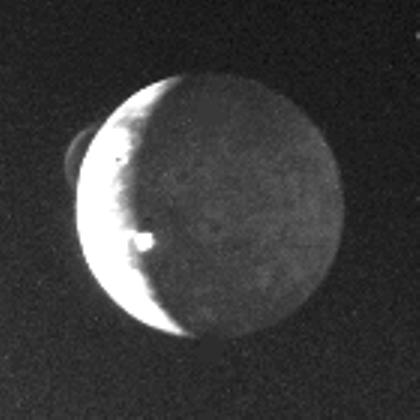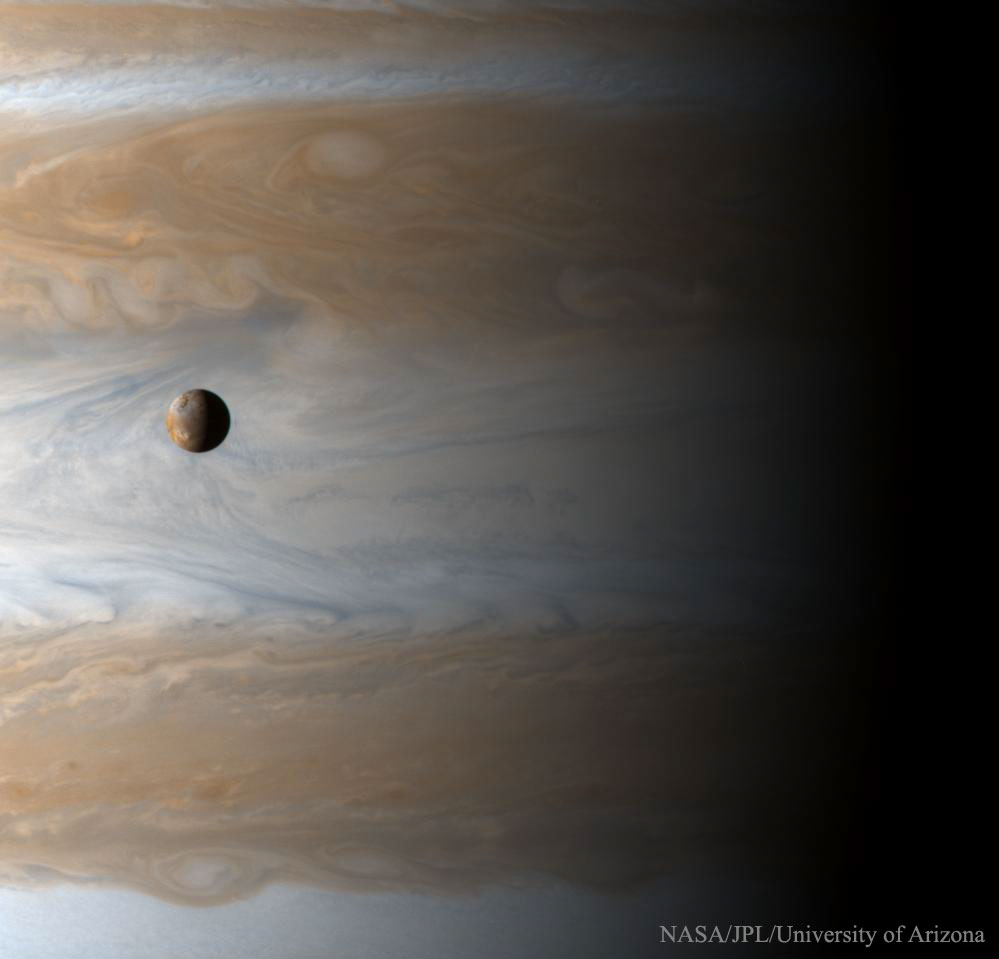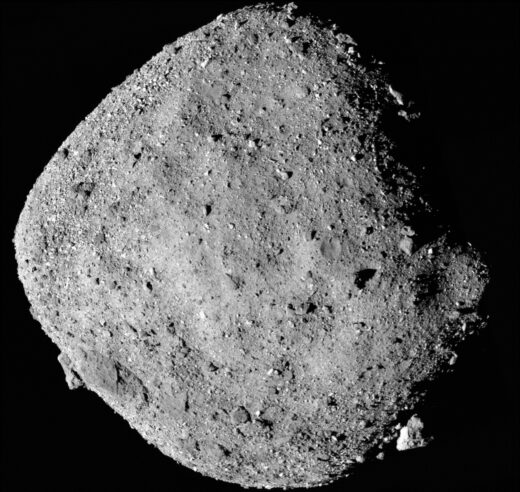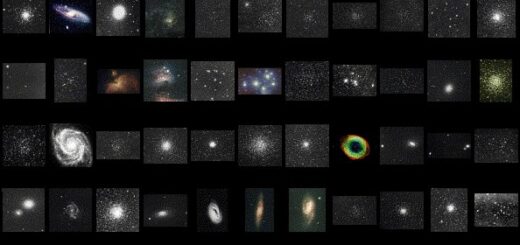How Volcanism Works on Jupiter’s Moon, Io
Did you know the Earth is not the only place in the solar system with active volcanoes? Several worlds show evidence of volcanism (quakes, geysers, dormant volcanoes), but only one other displays current eruptions of lava: Io, a moon of Jupiter.

Io was discovered in 1610 by Galileo, but its volcanoes were first seen in Voyager 1 data in 1979. Since then, every spacecraft mission to the Jupiter system has observed volcanic eruptions on Io, multiple at a time. This was unexpected for Io, because it is very similar in mass and size to the Earth’s own Moon.
Why does size matter?
Our Moon is not geologically active. It is thought that its relatively small size has caused it to lose much of the internal heat gained from its formation process and natural radioactivity that could produce volcanism, as internal heat drives similar activity on Earth. So, if our Moon does not have active volcanoes, why does Io?
Io orbits Jupiter, the largest planet in the solar system. The moon has an elliptical orbit, not staying at the same distance from Jupiter as it revolves around the planet. Io also orbits close to Jupiter and its other moons. What does this mean for Io?
Tidal forces
What we call a “tidal force” is the difference in gravitational force felt on opposite sides of an object. It is well-known our Moon causes the tides here on Earth. But you’re mostly water… do you feel tides due to the Moon? No. Why? You are small enough that the Moon’s gravity on the head is the same as its effect on your feet. The Earth is large enough that the Moon’s gravity is greater on the side closer to the Moon than on the side farther away. This causes our oceans to stretch out, like a rubber band getting tugged on each side.

Just like our Moon causes the ocean levels on Earth to rise and fall, the gravity of Jupiter affects Io. And it isn’t just Jupiter. Two of the other large nearby moons, Europa and Ganymede, also have a tidal effect on Io. There are no oceans on Io, but this combined tidal force is strong enough to affect the solid rock of the moon! The combination of its orbital characteristics and size allows tidal forces to heat up the moon’s interior. These stresses in the rock cause heating, which then can drive the volcanism observed on Io.

And that’s how Jupiter’s moon Io became the most volcanically active world in our solar system.
If you enjoyed learning how Io’s volcanism works, be sure to follow this page.



